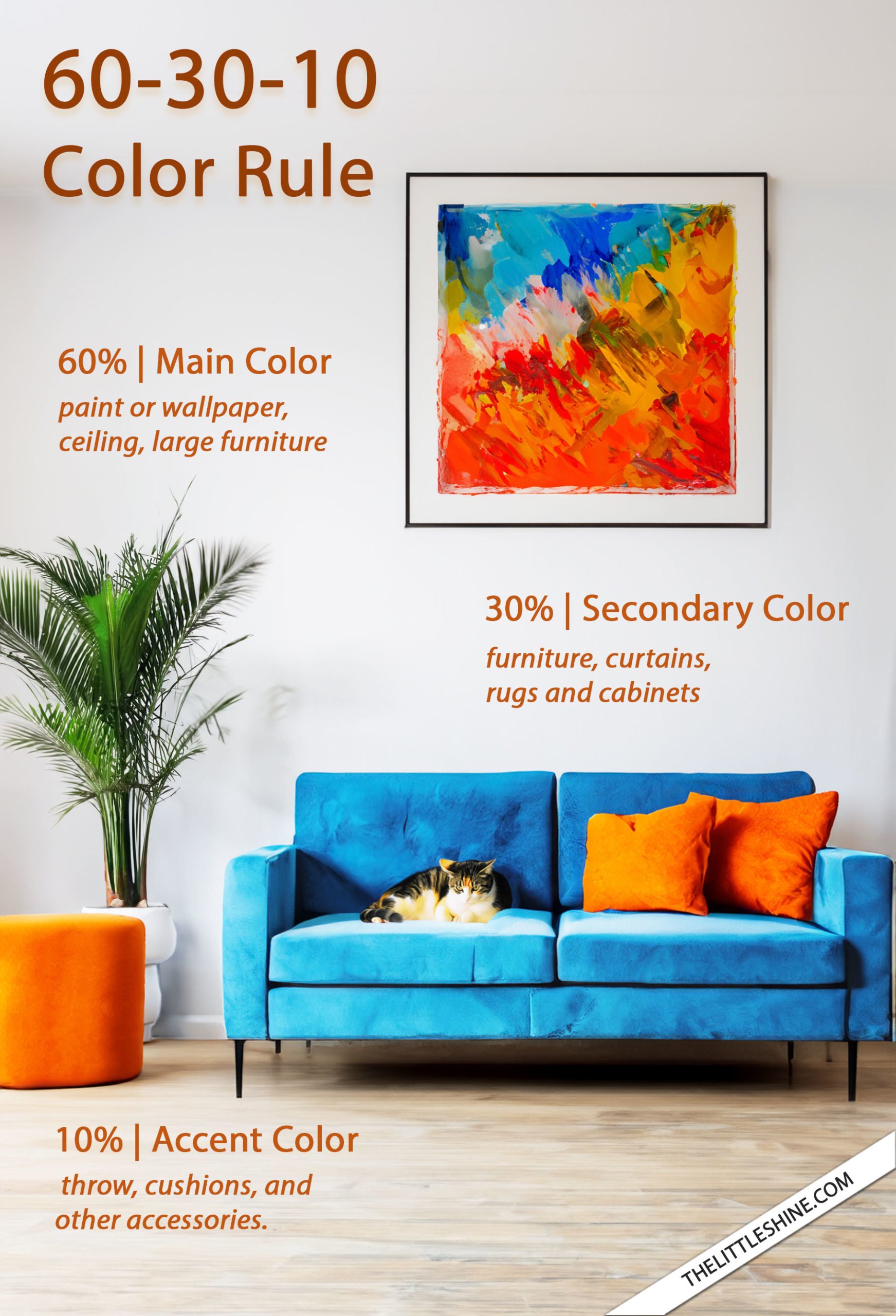If you’ve bought a new house and looking for ideas on what color shades to decorate the interiors of your new home with or maybe you’re just renovating your house and looking to give it a new look, but you’re stuck on how to go about it, well, this read’s for you!

Thinking about the “right” color scheme can be a hard task. Well, it needn’t be a “hard task” anymore if you keep in mind the simple 60-30-10 rule of the color palette, that you can follow to get the perfect and seamless color scheme for your home interiors. So, let’s get into the details, shall we?
The 60-30-10 Color Rule
When we talk about the 60-3-10 color rule, we will be discussing 3 parts or 3 types of colors in the color palette of your interiors and this is a rule most often followed by interior decorators. So here it is:
60-30-10 = 60 (the primary color) – 30 (the secondary color) – 10 (the accent color)
The primary color: Or the dominant color will be the main color you use in the room and it will be around 60% of the color scheme of the room color interior.
The secondary color: Or the supporting color will be around 30% of the color scheme of the room color interior.
The accent color: It is a rather bold shade and it will just occupy a small portion/10% of the room color interior scheme.
60-30-10: How Do You Follow It?
The Primary Color
This means that it is going to be the main color in the room, the color of 60% of the visible objects as you first enter your room. This will include your wall and other large objects like the couch, the beds, the sofa, the divan etc.
You can choose colors like a neutral shade of beige, cream, white, grey, light blue etc., wherein this color will act like the backdrop or background for the other colors (secondary and accent) that you’re going to then add.
The Secondary Color
This will include the color of the curtains or drapes, bedding, furniture that is painted etc. this is the color that will add some visual contrast to the room. This color is a supporting color to the primary (dominant) color.
You can choose colors like grey, light beige, white, light brown, lemon yellow, cream, light blue etc. Basically, this color should be different enough to be able to set it apart from your primary (dominant color).
The Accent Color
This color will be a color contrast or a complementary color to your color scheme. This will be in the form of small articles in a room like pillows, cushions, lampshades, candles and candle stands, vases, decorative pieces of art, wall hangings, souvenirs, ottoman etc.
You can choose colors like orange, blue, purple, red etc., basically any shade that you like and here’s a tip, it could be a color extracted from your artwork, wall hanging, souvenir, print on your upholstery, linen etc.
Note: In this article, the examples for primary, secondary and accent colors are more on lighter and neutral shades. You could also choose to go bold and go in for darker colors like black, brown, navy blue, red, green etc., for your primary color and thereafter, choose your secondary and accent colors based on it.
60-30-10: How to Follow This Rule with Neutral Shades?
Well, in case you are someone who likes and prefers monochromatic colors, then you can still follow this rule. All you need to do is use varying shades of a single (neutral) shade of color.
For an example, you can use light beige, cream and white or dark grey, light grey and pale grey.